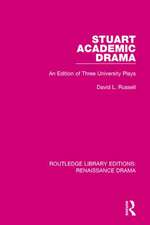Remediation Manual for Contaminated Sites
Autor David L. Russellen Limba Engleză Hardback – 6 oct 2011
Based on the author’s more than 40 years of experience working on environmental projects, Remediation Manual for Contaminated Sites provides a practical guide to environmental remediation and cleanups. It presents a broad overview of the environmental remediation process, distilled into what one needs to know to evaluate a specific challenge or solve a remediation problem. The text offers guidance on tasks that range from managing consultants and contractors to gathering data, selecting a suitable remediation technology, and calculating remediation costs.
The book includes remediation strategies for a variety of contaminants and examines a wide range of technologies for the remediation of water and soil, including excavation, wells, drainage, soil venting, vapor stripping, incineration, bioremediation, containment, solidification, vitrification, and phytoremediation. Written as a down-to-earth reference for professionals faced with the challenges of remediating a contaminated site, this book is also useful as a primer for students and those new to the field. It includes numerous figures, photographs, tables, and helpful checklists.
| Toate formatele și edițiile | Preț | Express |
|---|---|---|
| Paperback (1) | 438.61 lei 6-8 săpt. | |
| CRC Press – 23 sep 2019 | 438.61 lei 6-8 săpt. | |
| Hardback (2) | 706.86 lei 6-8 săpt. | |
| CRC Press – 6 oct 2011 | 1109.99 lei 3-5 săpt. | |
| CRC Press – 26 aug 2024 | 706.86 lei 6-8 săpt. |
Preț: 1109.99 lei
Preț vechi: 1353.64 lei
-18% Nou
Puncte Express: 1665
Preț estimativ în valută:
212.43€ • 220.95$ • 175.37£
212.43€ • 220.95$ • 175.37£
Carte disponibilă
Livrare economică 22 martie-05 aprilie
Preluare comenzi: 021 569.72.76
Specificații
ISBN-13: 9781439836224
ISBN-10: 1439836221
Pagini: 256
Ilustrații: 25 Tables, black and white; 45 Illustrations, black and white
Dimensiuni: 156 x 234 x 20 mm
Greutate: 0.48 kg
Ediția:Revizuită
Editura: CRC Press
Colecția CRC Press
ISBN-10: 1439836221
Pagini: 256
Ilustrații: 25 Tables, black and white; 45 Illustrations, black and white
Dimensiuni: 156 x 234 x 20 mm
Greutate: 0.48 kg
Ediția:Revizuită
Editura: CRC Press
Colecția CRC Press
Public țintă
Academic and Professional Practice & DevelopmentCuprins
Introduction and Overview. Data Requirements. Remedial Options. Costs of Remedial Activities. Biological Remediation. Exploration Notes and Techniques. Landfills, Brownfields, Barrier Walls, and Bottom Sealing. Modeling Notes. Phytoremediation. Index.
Notă biografică
David L. Russell is a professional engineer, writer, lecturer, and environmental professional. He has written three technical books on environmental topics, and countless articles and editorials. He has lectured and worked in such diverse places as the Ukraine, Ghana, Ecuador, Romania, Hungary, Saudi Arabia, Mexico, Poland, and the United Arab Emirates. His company, Global Environmental Operations Inc., has performed a variety of interesting and challenging projects, including researching solutions to radium removal in coal mine waters, setting up treatment facilities for large remediation projects, and risk assessments. He lives and works in Lilburn, Georgia.
Descriere
Based on the author’s experience working on environmental projects, this book provides a practical guide to environmental remediation and cleanups. It offers guidance on tasks that range from managing contractors to gathering data, selecting a suitable remediation technology, and calculating remediation costs. The book examines a wide range of remediation techniques, including excavation, wells, drainage, soil venting, vapor stripping, incineration, bioremediation, containment, solidification, vitrification, and phytoremediation. Written as a down-to-earth reference for professionals faced with the challenges of remediating a contaminated site, it is also a useful primer for students and those new to the field.























